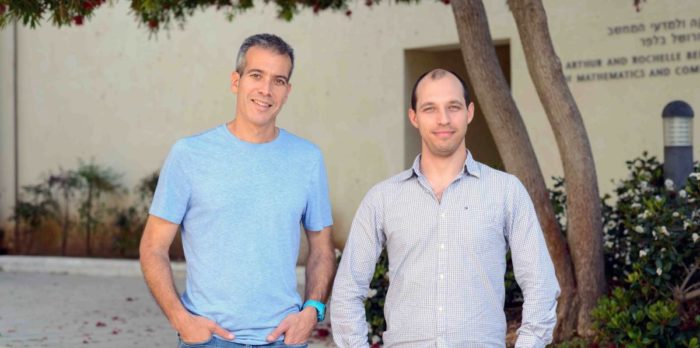
April 18, 2018
New research from the Weizmann Institute of Science and recently published in Nature Communications has delved into the process by which small sequences of RNA – microRNAs – regulate the long ones, predicting ways in which microRNAs would bind to the messenger strands.
On top of the basic code of life – the genes that encode all of the proteins in our bodies – are many other layers of code that control everything from amounts to location to the timing of protein production.
At the Weizmann Institute of Science, Professor Eran Segal and his group recently deciphered the key to one of these codes, written in the ‘language’ of RNA, which regulates, among other things, how much of each protein is produced.
For the past decade, Segal, who is in the Computer Science and Applied Mathematics, and Molecular Cell Biology Departments, has been working on understanding the ‘rulebook’ that tells one strand of RNA when and how to bind to another strand. The first strand, the messenger RNA, bears instructions for protein manufacture, while the second, a very short strand called microRNA, locks onto the messenger RNA and turns it down or shuts it down.
MicroRNAs, which have been the subject of a great deal of research in recent years, regulate the cell’s activities in a number of ways, but acting upon the messenger RNA is one of their main functions.
MicroRNAs bind to the long messenger strands on their ‘tails sections’ – called 3’UTRs, (UTR for UnTranslated Regions). 3’UTRs are mostly around 600-800 “letters” in length (nearly the length of this text to this point) and they may contain multiple binding sites. Until now, researchers including Segal had found some of the most crucial rules for proper binding, but it was clear that these were only a partial view of the guidelines directing the process.
Binding when the sequence is an inexact match
“The difference between the research we did 10 years ago and that of today is that then we could investigate around 10 – or at most 20 – genetic sequences, while with today’s techniques we can work with tens of thousands,” said Segal.
“This enables us to answer some crucial questions. For example, we knew that additional ‘letters’ or ‘words’ beyond the first 14 in the 3’UTRs play a role in microRNA binding, but we were unsure how these were involved in the process.”
In a series of experiments, led by PhD student Ilya Slutskin from Segal’s group, the researchers designed thousands of messenger RNAs with artificial 3’UTR sequences – each with different mutations so that the binding sequences would not exactly match the microRNAs – inserted them into human cells, and observed whether protein production was repressed.
If a particular mismatch resulted in a regulatory malfunction, the researchers concluded that the letters or sequence of letters that had been altered was important for proper binding. These results could be measured and quantified, so the group could not only ask: “Is it important?” but, “How important is it?”
These experiments enabled them to deduce the rules that govern microRNAs and answer some questions, including, for example: Which microRNAs work with which sequences? Which ‘secondary’ structures play a role in binding? Which are the best at binding to the 3’UTR sequences? The group found that by altering certain sequences of the code, they could turn the repression of protein manufacture up or down by over 50-fold.
Predicting binding from the 3’UTR sequence
Combining the results from this series of experiments, Segal and his group developed algorithms and used them to derive predictions about microRNA binding, which they then tested in a new series of experiments.
This is where researchers found that they were able to predict with remarkable accuracy – just from the 3’UTR sequence – the ways in which microRNAs would bind to the messenger strands.
“Since misregulation of the messenger RNA by microRNA is involved in numerous diseases, including many cancers, this work may have many implications. By writing a comprehensive ‘rulebook’ for 3’UTR-to-microRNA binding, we can, for example, greatly narrow down the number of mutations in these sequences that could be relevant to disease,” Segal concluded.
Professor Eran Segal’s research is supported by the Crown Human Genome Center, which he heads; the Else Kroener Fresenius Foundation; the Adelis Foundation; Judith Benattar; and the European Research Council.

(l-r) Professor Eran Segal and Ilya Slutskin are uncovering the basis of RNA binding







